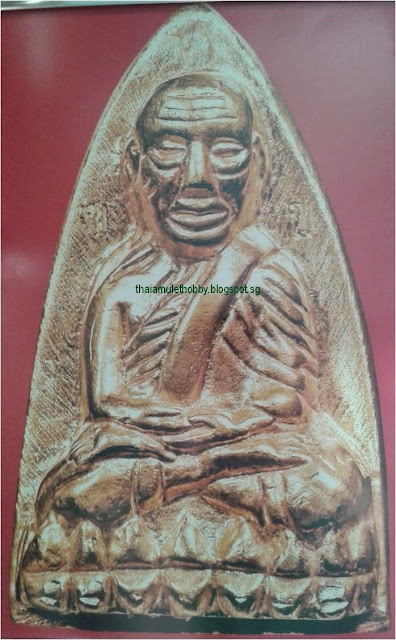Monk: Luang Po Tuad (LP Thuad) by PT Keow (famous for making LP Tuad amulets)
Temple: Wat Hui Ngor (also known as Wat Changhai 2)
Year: circa 2556 (2013)
Condition: Beautiful, only 9 pieces (Serial Number: 3), Solid Gold
Condition: Beautiful, only 9 pieces (Serial Number: 3), Solid Gold
The number 3 (三, Pinyin: sān, jyutping: saam1) sounds similar to the character for "birth" (生, Pinyin: shēng, jyutping: saang1), and is considered a lucky number.[citation needed] The number 3 is significant since there are three important stages in a man’s life (birth, marriage and death). Source: https://en.wikipedia.org/wiki/Numbers_in_Chinese_culture
The number 3 indicates multiples. In Buddhist culture, it represents Buddha, Dharma and Bonze, so people toll the bell three times to worship Buddha and pray for the removal of calamities with 3 sticks of incense (http://www.travelchinaguide.com/intro/social_customs/lucky_number.htm).
Number 3 in Chinese Culture
Chinese tradition considers Three a lucky number. There was once a man in Beijing paid $215,000 for the lucky mobile numbers of 133-3333-3333 in 2004. The first is not 3 because all mobile numbers in mainland China begin with 1. It is believed that groups of 3 in Chinese culture are even luckier. It has a meaning of more than two, many and several. For example, Confucius said: ‘Three people are walking together; at least one of them is good enough to be my teacher.’ A Chinese proverb goes that “The wisdom of three ordinary people exceeds that of the wisest individual.” Here Three means not only the exactly number, but also ‘many’ abstractly. So as in ‘San Shen Wu Ling’ (San is 3) and ‘Bing Dong San Chi’. The former means repeated orders, and the latter describes similarly that Rome wasn't built in a day. In some cases, Three represents a boundary, for example, ‘San Jia’ means the top three in a race, competition or examination. And ‘San Fu’ refers to the three periods of hottest days in a year when it is used to talk about weather.
Moreover, Three has its origin in Confucianism and Taoism. It stands for Heaven, Earth and Human being; philosophically, ‘Tao’ means the amiableness among the above three elements. In Chinese tradition, the phrase ‘San Huang Wu Di’ (Three Emperors and Five Sovereigns) generally refers to all emperors of ancient China. Besides, much wider uses of this number can be found in Chinese culture, concerning proverbs, history and common sense:
1. Three Character Classic (Chinese traditional enlightening book)
2. Three visits to the thatched cottage of the great sage, Zhuge Liang (a well-known story that Liu Bei asked for a talented assistant in the Three Kingdoms Period 220 - 280)
3. Three Kingdoms: Kingdom of Wu, Wei and Shu
4. Three Gorges of Yangtze River: Qutang Gorge, Wu Gorge and Xiling Gorge
5. Three Great Halls of Forbidden City in Beijing: Hall of Supreme Harmony (Taihedian), Hall of Central Harmony (Zhonghedian) and Hall of Preserved Harmony (Baohedian)
6. Three Sages in Chinese History: Confucius, Lao Tzu and Mo-tse
7. Three Emperors: There are many versions, among which the expression of Fu His, Nue Wa and Shennong is the most popular.
8. Three Ancient Moral Guidelines: Courtiers being obedient to their emperors, sons being obedient to fathers and wives being obedient to husbands.
Source: http://www.travelchinaguide.com/intro/lucky-number3.htm
Price: SGD $33,000
Only accept Singapore Cashier's Order.
Please conduct due diligence before purchase. Once sold, irrevocable.
This Content is Protected by Copyright

Comments